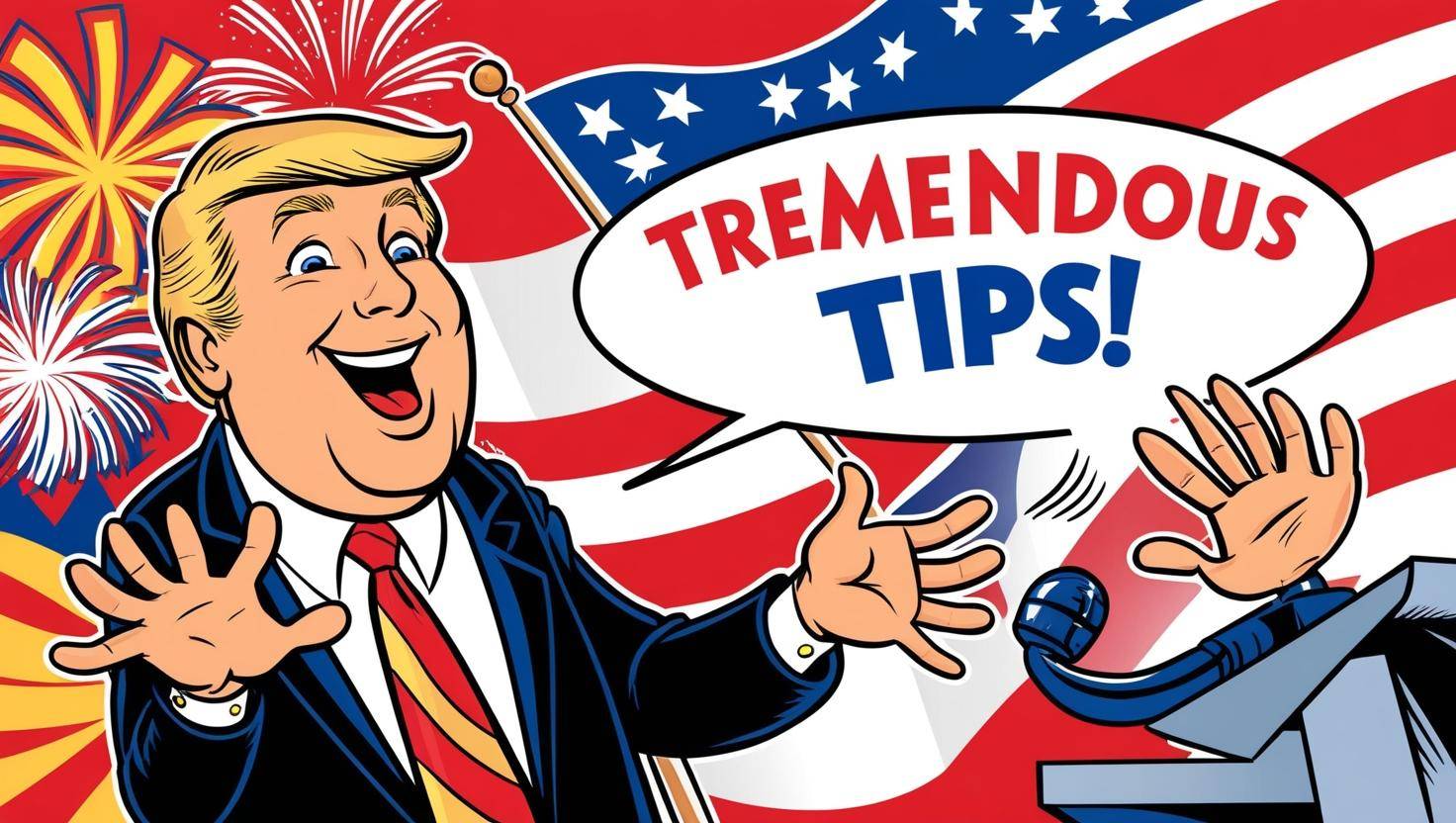Introduction
Donald Trump’s unique speaking style is instantly recognizable. His speeches are marked by a mix of grandiosity, repetition, catchphrases, and a direct, often extemporaneous delivery. Whether you're writing a parody, an impersonation for a script, or a comedic monologue, nailing the nuances of his speech is crucial.
In this guide, we’ll explore tips and techniques for crafting an accurate Trump speech impersonation. From understanding his vocabulary and sentence structure to capturing his tone and body language, this article will break down the key elements that make Trump’s speeches distinct.
1. Study Trump’s Speaking Style
To accurately write a Trump speech impersonation, you need to immerse yourself in his speech patterns. Watch his rallies, interviews, and debates. Pay attention to his tone, choice of words, and pacing.
Key Aspects to Observe:
Repetition: Trump often repeats words and phrases for emphasis. Example: “We’re going to win, folks. We’re going to win big. Believe me.â€
Superlatives: He frequently uses words like tremendous, fantastic, the best, incredible, beautiful.
Simple Sentence Structure: His sentences are often short, direct, and easy to understand.
Pauses and Hand Gestures: Trump uses pauses for emphasis and frequently gestures with his hands to reinforce points.
2. Use Trump’s Signature Catchphrases
Trump has a set of well-known phrases that he frequently uses. Incorporating these into your impersonation will enhance authenticity.
Common Trump Catchphrases:
“Believe me.â€
“Fake news.â€
“We’re going to make America great again.â€
“Nobody knows [topic] better than me.â€
“Tremendous.â€
“They don’t want to talk about that.â€
Using these catchphrases strategically within a speech will help capture Trump’s rhetorical style.
3. Master His Sentence Structure and Phrasing
Trump’s speech pattern is conversational, making it easy for audiences to follow. Unlike traditional politicians, he avoids overly complex language.
Key Features:
Short, Declarative Sentences: “We are winning. It’s amazing. Everyone says so.â€
Inconsistent Grammar: Trump often starts sentences one way and finishes them another. Example: “You look at what’s happening, folks, and it’s very, very bad. But we’re changing it.â€
Transitions That Don’t Always Follow: He sometimes jumps between unrelated topics. Example: “We’re bringing jobs back. The economy is booming. And by the way, did you see the polls?â€
4. Emphasize Hyperbole and Emotion
Trump often exaggerates to make a point. He uses extreme adjectives and emotional appeals to connect with his audience.
Examples of Hyperbole:
“This is the biggest tax cut in history.â€
“Nobody has ever seen anything like this before.â€
“We have the best people, the smartest people.â€
Using over-the-top statements will make your impersonation feel more authentic.
5. Add Personalization and Storytelling
Trump frequently personalised his speeches by bringing in anecdotes, often referring to real or imagined interactions with people.
Examples:
“I just spoke to a great guy, a worker in Ohio, and he told me, ‘Mr. President, we love what you’re doing.’â€
“I had a friend, great guy, the best, he said, ‘Sir, you’re doing an incredible job.’â€
Adding these kinds of personal stories makes the speech feel more authentic.
6. Use a Strong, Persuasive Tone
Trump’s speeches are persuasive because they appeal to emotions, use strong language, and create a sense of urgency.
Persuasive Techniques:
Fear Appeal: “If we don’t fix this, we’re going to be in big trouble, folks.â€
Call to Action: “We need to stand up, fight, and win. Are you with me?â€
Attack on Opponents: “These people, they don’t know what they’re doing. Disaster!â€
7. Incorporate Trump’s Speaking Cadence and Delivery
Imitating Trump’s speech goes beyond words; the rhythm, pauses, and emphasis matter too.
Key Aspects:
Pauses for Effect: He often pauses after making a key statement to let it sink in.
Rising and Falling Intonation: His voice often rises dramatically on certain words.
Hand Gestures: While writing, imagine where you would place gestures like the “okay†sign, the pointed finger, or the two-handed wave.
8. Mock Interviews and Debate Style
Trump’s debate and interview style is another critical aspect to replicate.
Features:
Interrupting Opponents: “Excuse me, excuse me—wrong!â€
Deflecting Questions: “That’s a great question, but let me tell you something even more important.â€
Reframing Issues: “The real question is—why hasn’t anyone done this before?â€
9. Inject Humor and Satire
If your goal is to write a comedic impersonation, exaggerate Trump’s quirks even further.
Tips for Humor:
Overuse of Superlatives: “This is the most amazing, incredible, fantastic thing ever.â€
Absurd Comparisons: “Some people say I’m better than Lincoln. I’m not saying that. But some people say it.â€
Self-Praise: “No one writes Trump speeches better than me. Maybe Shakespeare. But he’s dead.â€
Conclusion
Writing an accurate Trump speech impersonation requires studying his speech patterns, vocabulary, and delivery style. By focusing on repetition, hyperbole, storytelling, and humor, you can craft a convincing and entertaining Trump-style speech.
Whether for satire, comedy, or scriptwriting, mastering these elements will ensure your impersonation feels as close to the real thing as possible. So, next time you need to channel Trump in writing, just remember: “It’s gonna be tremendous, folks. Absolutely tremendous.â€



